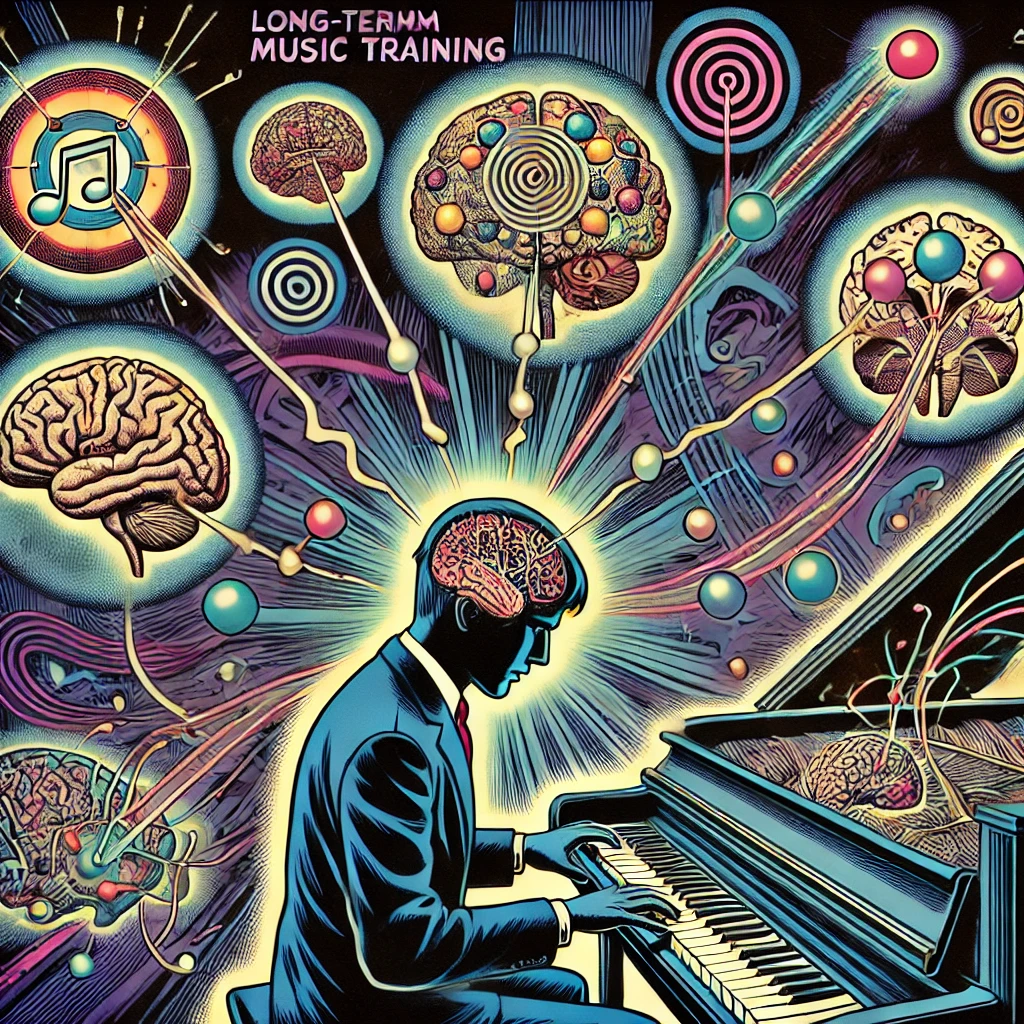Long term music training tunes how the brain temporally binds signals from multiple senses
Practicing a musical instrument is a rich multisensory experience involving the integration of visual, auditory, and tactile inputs with motor responses. This combined psychophysics-fMRI study used the musician’s brain to investigate how sensory-motor experience molds temporal binding of auditory and visual signals. Behaviorally, musicians exhibited a narrower temporal integration window than nonmusicians for music but not for speech. At the neural level, musicians showed increased audiovisual asynchrony responses and effective connectivity selectively for music in a superior temporal sulcus-premotor-cerebellar circuitry. Critically, the premotor asynchrony effects predicted musicians’ perceptual sensitivity to audiovisual asynchrony. Our results suggest that piano practicing fine tunes an internal forward model mapping from action plans of piano playing onto visible finger movements and sounds. This internal forward model furnishes more precise estimates of the relative audiovisual timings and hence, stronger prediction error signals specifically for asynchronous music in a premotor-cerebellar circuitry. Our findings show intimate links between action production and audiovisual temporal binding in perception.
http://www.pnas.org/content/108/51/E1441. abstract
Research suggests that long-term music training can indeed influence how the brain temporally binds signals from multiple senses, a phenomenon known as multisensory temporal processing. Here’s an overview of some key findings in this area:
1. Enhanced Temporal Precision: Long-term music training has been associated with enhanced temporal precision in sensory processing, including both auditory and visual modalities. Musicians often demonstrate superior temporal discrimination abilities and more accurate temporal integration of auditory and visual stimuli compared to non-musicians.
2. Improved Audiovisual Integration: Musicians tend to exhibit enhanced audiovisual integration skills, allowing them to integrate auditory and visual information more effectively and accurately. Studies have shown that musicians have more precise audiovisual temporal binding windows, reflecting their ability to temporally align auditory and visual signals with high precision.
3. Cross-Modal Plasticity: Musical training may lead to cross-modal plasticity, whereby sensory experience in one modality (e.g., auditory) influences processing in another modality (e.g., visual). Research has demonstrated that musicians show increased connectivity between auditory and visual brain regions, suggesting that musical training promotes cross-modal interactions and enhances the brain’s ability to temporally bind signals from multiple senses.
4. Timing and Synchronization Skills: Musical training involves extensive practice in timing and synchronization tasks, such as rhythm perception, beat synchronization, and ensemble performance. These experiences may shape the brain’s ability to temporally bind sensory signals, leading to improvements in multisensory temporal processing abilities.
5. Impact on Cognitive and Perceptual Abilities: Enhanced multisensory temporal processing abilities in musicians may have broader implications for cognitive and perceptual abilities. For example, superior audiovisual integration skills may contribute to musicians’ ability to synchronize movements with auditory cues during music performance or to perceive and interpret complex audiovisual stimuli in everyday life.
Overall, the evidence suggests that long-term music training can tune the brain’s ability to temporally bind signals from multiple senses, leading to improvements in multisensory temporal processing abilities. These findings highlight the plasticity of the brain’s sensory systems and the potential benefits of musical training for enhancing multisensory perception and cognition.
